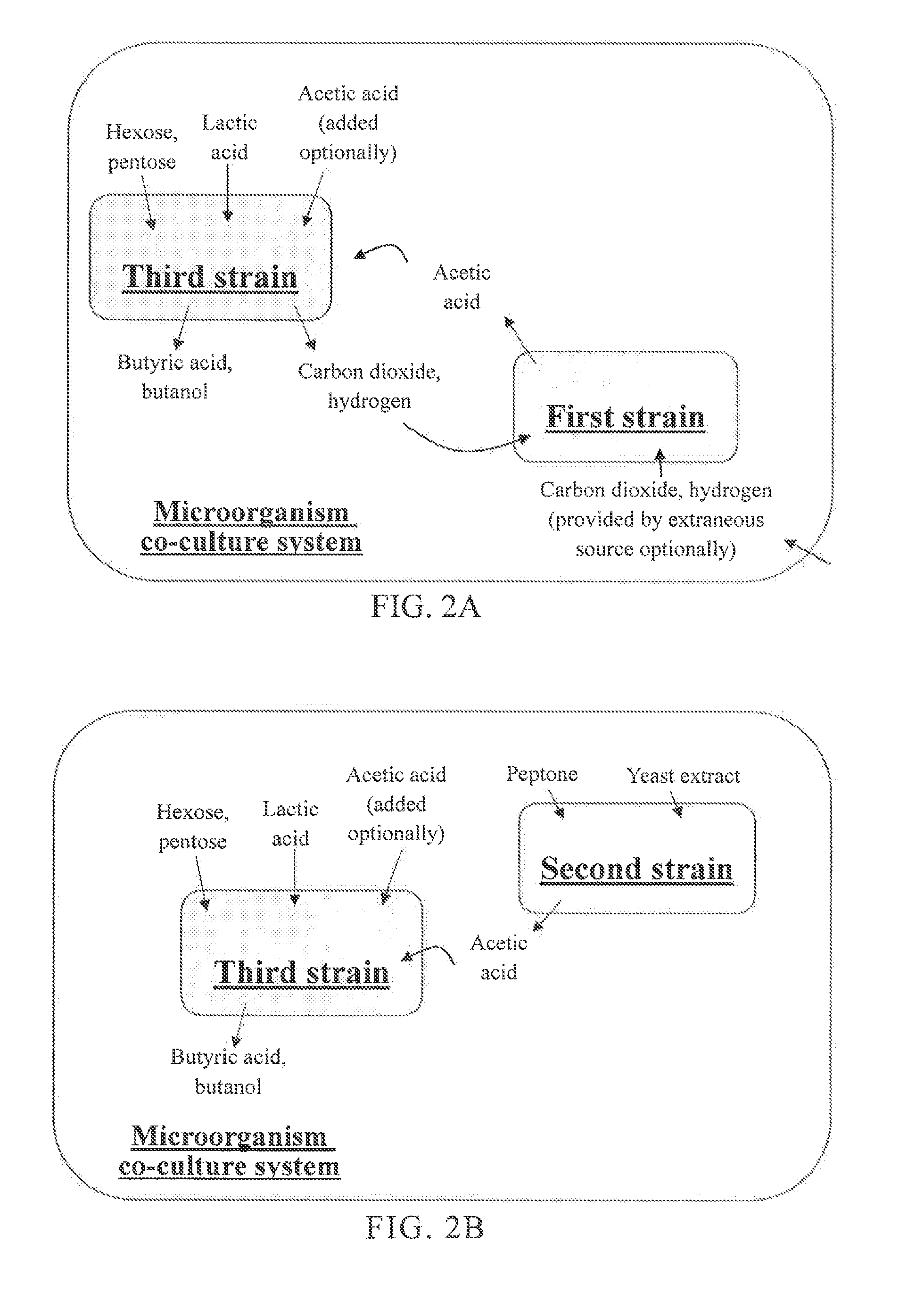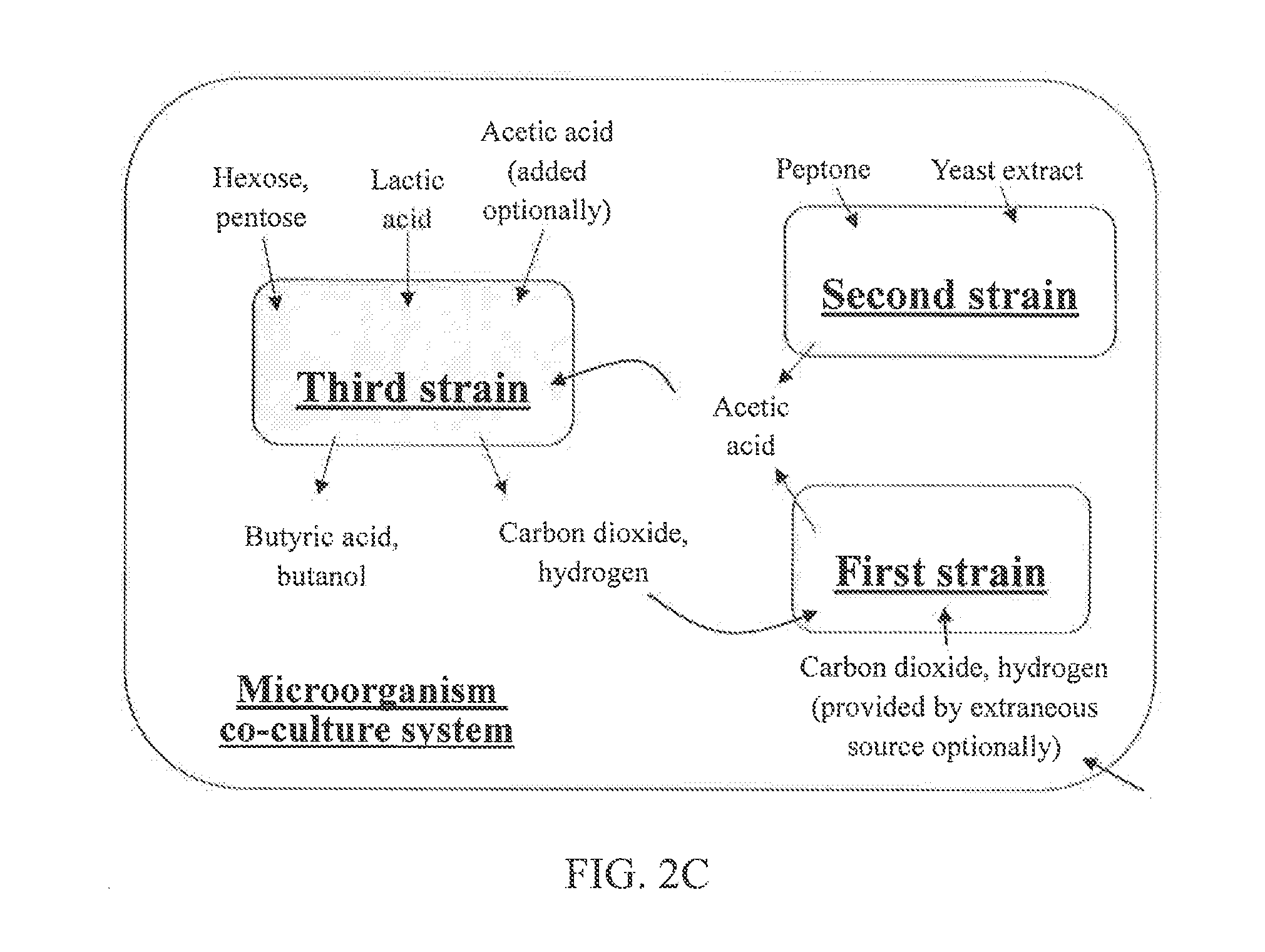Microorganism co-culture system and uses of the same
- Summary
- Abstract
- Description
- Claims
- Application Information
AI Technical Summary
Benefits of technology
Problems solved by technology
Method used
Image
Examples
example 1
Use of a Microorganism Co-Culture System Containing a First Strain and a Third Strain in the Production of an Organic Acid
experiment 1-1
Strains
[0063]In Example 1, one of Clostridium ljungdahlii BCRC 17797 and Terrisporobacter glycolicus BCRC 14553, both are able to fix carbon oxide, was used as the first strain, and Clostridium tyrobutyricum BCRC 14535, which is able to metabolize saccharide or organic compound to produce organic acid (such as acetic acid and butyric acid) in fermentation, was used as the third strain.
experiment 1-2
Pre-Culture
[0064](a) Clostridium ljungdahlii BCRC 17797: a single colony of this strain was selected, inoculated in 10 ml deoxygenated RCM medium being externally added with 10 g / L fructose, and incubated in an anaerobic incubator at 37° C. for 48 hours so as to let the OD600 (the absorbance at a wavelength of 600 nm) of the strain reach about 1.0 to 1.2.[0065](b) Terrisporobacter glycolicus BCRC 14553 / Clostridium tyrobutyricum BCRC 14535: a single colony of the strain was selected, inoculated in 10 ml deoxygenated RCM medium, and incubated in an anaerobic incubator at 37° C. for 14 hours to 16 hours so as to let the OD600 (the absorbance at a wavelength of 600 nm) of the strain reach about 1.0 to 1.2.
PUM
 Login to View More
Login to View More Abstract
Description
Claims
Application Information
 Login to View More
Login to View More - R&D
- Intellectual Property
- Life Sciences
- Materials
- Tech Scout
- Unparalleled Data Quality
- Higher Quality Content
- 60% Fewer Hallucinations
Browse by: Latest US Patents, China's latest patents, Technical Efficacy Thesaurus, Application Domain, Technology Topic, Popular Technical Reports.
© 2025 PatSnap. All rights reserved.Legal|Privacy policy|Modern Slavery Act Transparency Statement|Sitemap|About US| Contact US: help@patsnap.com



